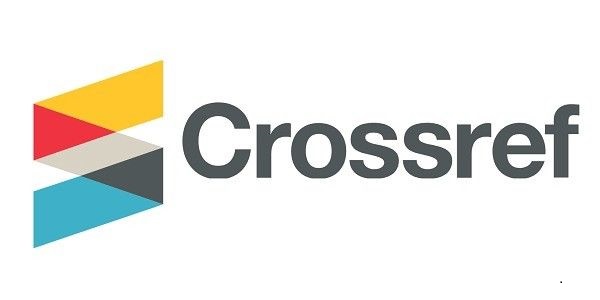First record of the species Aubignyna perlucida in Basra marshlands sediments/ southern Iraqi
DOI:
https://doi.org/10.56714/bjrs.50.2.20Keywords:
Aubignyna perlucida, Marshlands of Iraq, Late Holocene, Mesopotamia, Southern Iraq, Benthic foraminiferaAbstract
The research focused on the identification of a newly recorded species in Iraq, particularly in the southern region, through the collection of fifteen samples from seven locations within the Basra Governorate, situated northwest of Al Shafi District. The sediment types of these samples were analyzed, alongside the identification of foraminifera species and their relative abundance in the area under investigation. The grain size analysis of the sediments revealed the presence of four sediment types: mud, clay, sandy silt, and sandy mud, with mud being the predominant type in the region. The identified foraminifera species was Aubignyna perlucida, a benthic foraminifera that inhabits brackish to marine environments.. Its presence in the study area serves as significant environmental evidence of the marine influence on southern Iraq, particularly within the sediments dating back to the Late Holocene epoch
Downloads
References
R.W. Brown ,2006. "Ancient Civilizations to 300 BC Introduction: The Invention and Diffusion of Civilization". University of North Carolina. Archived from the original on 26 July 2012. Retrieved 7 August 2010.
V.K. Sissakian, N. Adamo, N. Al-Ansari, M. Abdullah and J. Laue, “Sea level changes in the Mesopotamian Plain and limits of the Arabian Gulf: A critical review, ” Journal of Earth Sciences and Geotechnical Engineering, vol.10, issue 4, pp.87-110, 2020. Available: https://www.diva-portal.org/smash/get/diva2:1416099/FULLTEXT01.pdf
S. S. Al–Sheikhly, W.A. Al–Jumaily, F. S. Al-Ka'abi, Z. K. Al–Shehmany, and Owen, M. A., “Late Pleistocene-Holocene Paleoecology of Southern Mesopotamia, Iraq, ” Iraqi Journal of Science, vol.. 58, issue4A, pp.1856-1873, 2017. Available: https://www.ijs.uobaghdad.edu.iq/index.php/eijs/article/download/5664/1746.
O. A. Al-Badrani, F. N. Hassan, and M.A. Al-Hadeedy, “Calcareous Nannofossil Biostratigraphy and Ostracoda Paleoecology of Hartha Formation from Balad (1) well, Central Iraq,” Iraqi Journal of Science, pp.3962-3972, 2021. Available: https://www.iasj.net/iasj/download/902ed8562e69b583.
R.L. Folk, 1980. Petrology of Sedimentary Rocks, Hemphill: Texas.Available: https://repositories.lib.utexas.edu/bitstreams/4537855d-d386-4794-bfbc-0f24715e64dc/download
J.W. Murray, J.E. Whittaker and E. Alve, “On the type species of Aubignyna and a description of A. hamblensis, a new microforaminifer from temperate shallow waters, ” Journal of Micropalaeontology, vol.19, issue1, pp.61-67, 2000. Available: https://jm.copernicus.org/articles/19/61/2000/jm-19-61-2000.pdf
I. Brodniewicz, “Pleistocene foraminifers of the area of the lower Vistula river (northern Poland), ” Acta Palaeontologica Polonica, vol.17, issue4, pp.423-525,1972.Available: https://bibliotekanauki.pl/articles/23026.pdf
A. Heron-Allen and A. Earland, “Clare Island Survey; Part 64 - The foraminifera of the Clare Island District, Co.Mayo, ” Ireland. Proceedings of the Royal Irish Academy, vol.31, issue. 3, pp.1-188. 1913.
K. Atkinson, “The association of living foraminifera with algae from the littoral zone, south Cardigan Bay, Wales, ” Journal of Natural History, vol.3, pp.517-542,1969.
J.P. Margerel, “Aubignyna, noveau genre de foraminifères du Pliocène du Bosq d’Aubigny (Manche), ” Revue de Micropaléontologie, vol.13, pp.58-64, 1970.
V.V. Yanko, Troitskaja, T.S., “Late Quaternary Foraminifera of the Black Sea (in Russian), ” Trudy Instituta Geologiii Geo¢siki, Akademiya Nauk SSSR, Novosibirsk, vol.694, pp.111, 1987.
B.W. Hayward, “Grenfell, H.R., Reid, C.M., Hayward, K.A., Recent New Zealand shallow-water benthic foraminifera: Taxonomy, ecologic distribution, biogeography, and use in paleoenvironmental assessment, ” Inst. Geol. Nucl. Sci. Monogr. vol.21, pp.1-258, 1999.
M.A. Kaminski, A. Aksu, M. Box, R.N. Hiscott, S. Filipescu and M. Al-Salameen, “Late Glacial to Holocene benthic foraminifera in the Marmara Sea: implications for Black Sea–Mediterranean Sea connections following the last deglaciation, ” Marine Geology, vol.190, issue (1-2), pp.165-202, 2002.
World Register of Marine Species(2024. Nov. 5). Aubignyna perlucida (Heron-Allen & Earland, 1913). Available: https://www.marinespecies.org/2010
B.M. Issa, “Depositional environments and biofacies of selected sediments, north Basrah, ” Journal of Basrah Researches ((Sciences)), vol.36, issue5A, pp.1-14,2010.
Available: https://www.iasj.net/iasj/download/08dad357ddb0c657.
B.M. Issa, “Ostracoda and Charophyte as indicators of environmental varity in the marshland area of Southern Iraq, ” Journal of Basrah Researches ((Sciences)), vol.42, issue 2A, pp.148-159, 2016. Available: https://www.academia.edu/download/51709979/14.pdf
G. Barbieri, A. Amorosi and S.C. Vaiani, “Benthic foraminifera as a key to delta evolution, ” Micropaleontology, vol.63, issue1, pp.27-41, 2017.
L. Capotondi, S. Bonomo, A. Graiani, M. Innangi, S. Innangi, F. Giglio, M. Ravaioli and L. Ferraro, “Spatial distribution of benthic foraminifera in the Neretva Channel (Croatia coast): faunal response to environmental parameters,” Geosciences, vol.12, issue12, pp.456, 2022.Doi: https://doi.org/10.3390/geosciences12120456.
G.P. Nestell, A. Mestre and S. Heredia, “First Ordovician Foraminifera from South America: A Darriwilian (Middle Ordovician) fauna from the San Juan Formation, Argentina, ” Micropaleontology, vol.55, issue 4, pp.329-344, 2009.
O. Koukousioura, M.D. Dimiza, E. Kyriazidou, M.V. Triantaphyllou, G. Syrides, E. Aidona, K. Vouvalidis, I.P. Panagiotopoulos and L. Papadopoulou, “Environmental evolution of the Paliouras coastal lagoon in the eastern Thermaikos gulf (Greece) during Holocene, ” Environmental Earth Sciences, vol.78, pp. 1-16, 2019.Doi: https://doi.org/10.1007/s12665-019-8316-y.
V. Rossi, G. Barbieri, S.C. Vaiani, M. Cacciari, L. Bruno, B. Campo, M. Marchesini, S. Marvelli and A. Amorosi, “Millennial‐scale shifts in microtidal ecosystems during the Holocene: dynamics and drivers of change from the Po Plain coastal record (NE Italy), ” Journal of Quaternary Science, vol.36, issue.6, pp.961-979, 2021.Doi: https://doi.org/10.1002/jqs.3322.
A. Amorosi, L. Bruno, B. Campo, B. Costagli, E. Dinelli, W. Hong, I. Sammartino and S.C. Vaiani, “Tracing clinothem geometry and sediment pathways in the prograding Holocene Po Delta system through integrated core stratigraphy,” Basin Research, 32(Clinoforms and Clinothems: Fundamental Elements of Basin Infill), pp.206-215, 2020. Doi: https://doi.org/10.1111/bre.12360.
O. Koukousioura, K. Kouli, K. Vouvalidis, E. Aidona, G. Karadimou and G. Syrides, “A multi-proxy approach for reconstructing environmental dynamics since the mid Holocene in Lake Ismarida (Thrace, N. Greece), ” Revue de micropaléontologie, vol.68, , pp.1-11, 2020. Doi: https://doi.org/10.1016/j.revmic.2020.100443.
W.N. Mode, “Quaternary stratigraphy and palynology of the Clyde foreland, Baffin Island, NWT, Canada. University of Colorado at Boulder,” Micropaleontology, vol. 63, issue 1, pp.27-41, 1980.
G. Barbieri and S.C. Vaiani, “Benthic foraminifera or Ostracoda? Comparing the accuracy of palaeoenvironmental indicators from a Pleistocene lagoon of the Romagna coastal plain (Italy), ” Journal of Micropalaeontology, vol.37, issue1, pp.203-230, 2018. Doi: https://doi.org/10.5194/jm-37-203-2018
F. Frontalini and R. Coccioni, “Benthic foraminifera for heavy metal pollution monitoring: a case study from the central Adriatic Sea coast of Italy,” Estuarine, Coastal and Shelf Science, vol.76, issue2, pp.404-417, 2008.
B.M. Isaa, “Benthic Foraminifera and Bithynia sp. Opercula as Indicators of Depositional Environment of Late Holocene in Eastern Hammar Marsh, Southern Iraq,” Kirkuk Journal of Science, vol.19, issue 3, pp. 36-47, 2024. Doi: https://doi.org/10.32894/kujss.2024.152718.1174.

Downloads
Published
Issue
Section
License
Copyright (c) 2024 Basrah Researches Sciences

This work is licensed under a Creative Commons Attribution 4.0 International License.







